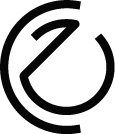How to design for the uncertainties & specificities of refugee camps?
Flexible & Incremental design
A refugee camp is a dynamic place with unique social dynamics, cultural specificities, difficult climatological conditions and rigid building regulations.As designers, we take into consideration these parameters but also recognize the uncertainty of how our design scheme is going to be received in the reality of everyday life. A key is to provide an open design scheme that allows iterations and employ incremental design that embraces adaptations in different phases.
Danniely Staback, Anna Ryan, and Natalie Bellefleur
Example: Desert Gardens and Inked Hands
Desert Garden & Inked Hands was designed as part of the 4.308 ACT class at MIT. The project was informed by the Future Heritage Lab community engagement workshop at the Azraq Camp and specifically the request of young girls for the means to work with henna. The garden would provide a social space for young women, visual relief from the barren landscape of the desert and the means to make ink for henna artwork.
Danniely Staback, Anna Ryan, Natalie Bellefleur









